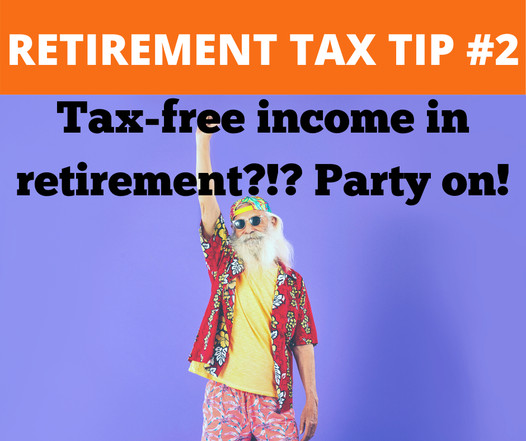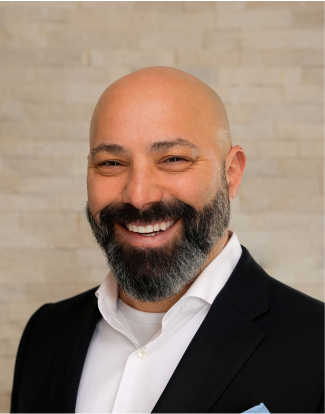Summary
- Most income sources in retirement are taxed
- By timing the withdrawals from your RRSP/RRIF and deferring your CPP benefits, you can maximize the Guaranteed Income Supplement (GIS)
- GIS is not taxed and provides tax-free cash flow in retirement
- A maximized TFSA or other non-registered cash minimizes retirement taxes
- Permanent life insurance can also be used to generate tax-free cash flow in retirement by using a policy loan.
RRSP or RRIF income – TAXED!
Non-registered investment income – TAXED!
Canada Pension Plan income – TAXED!
Old Age Security income – TAXED!
Defined benefit or defined contribution pension income – TAXED!
Chances are your retirement income is made up of one or more of these income types. That means:
- You saved your whole life and now that you want to access that money, it’s taxed!
- You’ve worked hard and contributed to the Canada Pension Plan and now that you want to claim your pension, it’s taxed!
- You’re retired and your income is modest so the Government helps you out with Old Age Security…but it’s taxed!
- You were a loyal employee for years and paid into your company’s pension plan and now that you want to receive your annuity, it’s taxed!
All this tax, just when you can least afford it.
It doesn’t have to be this way. What if you could create a stream of tax-free retirement income during some of your retirement?
Lenore is a 64-year old who was recently widowed. She’s been able to save well but is far from well-off. She has the following assets:
- RRSP valued at $450,000
- TFSA valued at $90,000
- Home worth $600,000
- Cash from insurance policy in the amount of $200,000.
Let’s assume that if Lenore were to start receiving CPP at age 65 she would receive $1000 a month. She could also receive Old Age Security of $607 a month. She has no pension from her employer. Lenore would like a before-tax income of about $60,000 a year.
If Lenore were to start generating her income from her existing income sources, she might do the following:
- Receive $12,000 a year in CPP
- Receive $7289 a year in OAS
- Pull $25,000 a year form her RRSP
- Withdraw an additional $15,000 a year from her TFSA
- Top up her income with $1000 from her cash (life insurance death benefit).
The tax on her $60,000 gross income would be approximately $6259† (don’t forget that the TFSA and insurance death benefit are not taxed) and her after-tax income would be about $53,700. The average tax rate on her entire income would be 10.4%.
What if Lenore chose to defer her CPP to age 70 and defer her RRSPs as late as possible? She would achieve the following:
Receive $7289 a year in OAS
- Pull $20,000 a year from her TFSA
- Top up her income with $21,600 from her cash (life insurance death benefit).
Wait! That’s only about $49,000 before tax, not $60,000!
Lenore’s taxable income has dropped from $44,289 to $7289, and she will pay $0 tax on that amount (because her taxable income is lower than her personal exemption amount). Since she’s collecting OAS and her taxable income is below $18,744, she qualifies for:
- $11,084 in Guaranteed Income Supplement (GIS).
So not only does she not pay any income tax, her effective tax rate is -22%, which means she has a higher after-tax income ($60,000) than her before-tax income ($49,000)!
If she’s able to do this to age 70, she will then be able to receive $1420‡ a month in CPP instead of $1000 – that’s $5040 more a year! And by deferring her RRSP withdrawals to age 72 instead of 65, her RRSP could grow to $633,000§. That means that her minimum income from her Registered Retirement Income Fund (RRIF) jumps to over $34,000 at age 72 versus $18,000 at age 65!
At that point, Lenore has deferred her taxable income as much as she could. She will lose the GIS at age 70, but her RRIF, CPP and OAS income will total about $58,000, meaning she will need only a little bit more (plus, adjust for inflation) from her TFSA or insurance proceeds meaning she should have substantial savings for her entire retirement.
A second option is to use life insurance to generate tax-free cash flow in retirement.
To achieve this, Lenore would take the cash she received as death benefit on her husband’s life insurance policy (or any cash or non-registered investments she has on hand) and use it to purchase a participating whole life insurance policy. In Lenore’s case, she could take out an insurance policy that looks like this:
- Initial coverage amount: $316,000
- Annual premium payment: $25,000
- Number of years for premium payment: 10
While this strategy is not effective at producing immediate tax-free cash flow, by year 5 (age 70), Lenore could be able to create an annual tax-free cash flow of about $14,000* for 20 years. This is done through a policy loan. The insurance policy is used as collateral for a loan against the policy cash value that has built up within the policy.
The loan could be set up so that no repayments are made and the outstanding balance of the loan would be deducted from the death benefit when Lenore dies, which is fine since she was not taking the insurance out to create a legacy for her kids, but to generate tax-free cash flow in her retirement.
In Lenore’s case, her annual loan withdrawal would only need to be $2000 to $3000, since her RRIF + CPP + OAS income will remain close to her $60,000 (adjusted annually for inflation and RRIF prescribed factor increases) before-tax income goal.
And remember: not only does tax-free cash eliminate the tax on that revenue stream, it also contains or reduces your total taxable income, keeping your marginal tax rate lower and reducing the total tax you pay on your taxable income.
Interested in exploring these or other tax-saving strategies? Let us guide you through your retirement options. All it takes is a call or email.
† Per 2021 combined federal and provincial tax rates
‡ Based on a monthly increase in CPP payments of 0.7% every month between age 65 and age 70
• Based on annual compounded growth of 5% over seven years
* In the form of a policy loan up to 80% of the cash value within the policy



